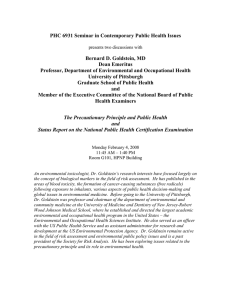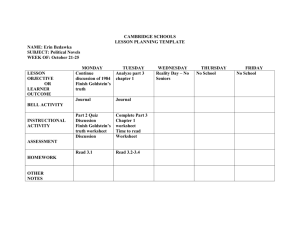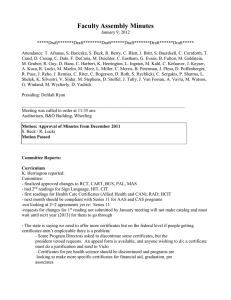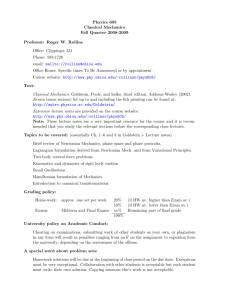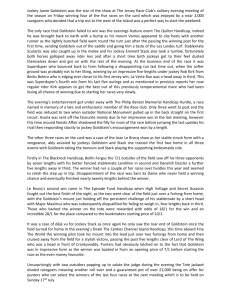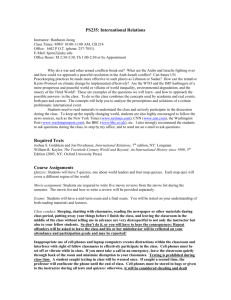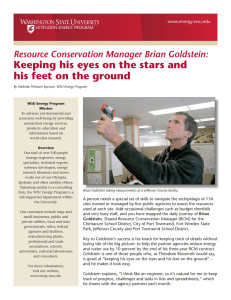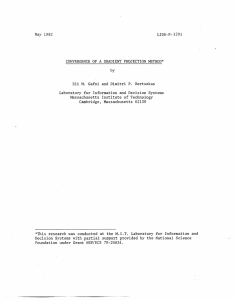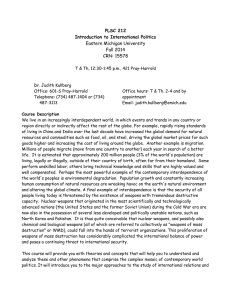AA242a: Classical Dynamics
advertisement
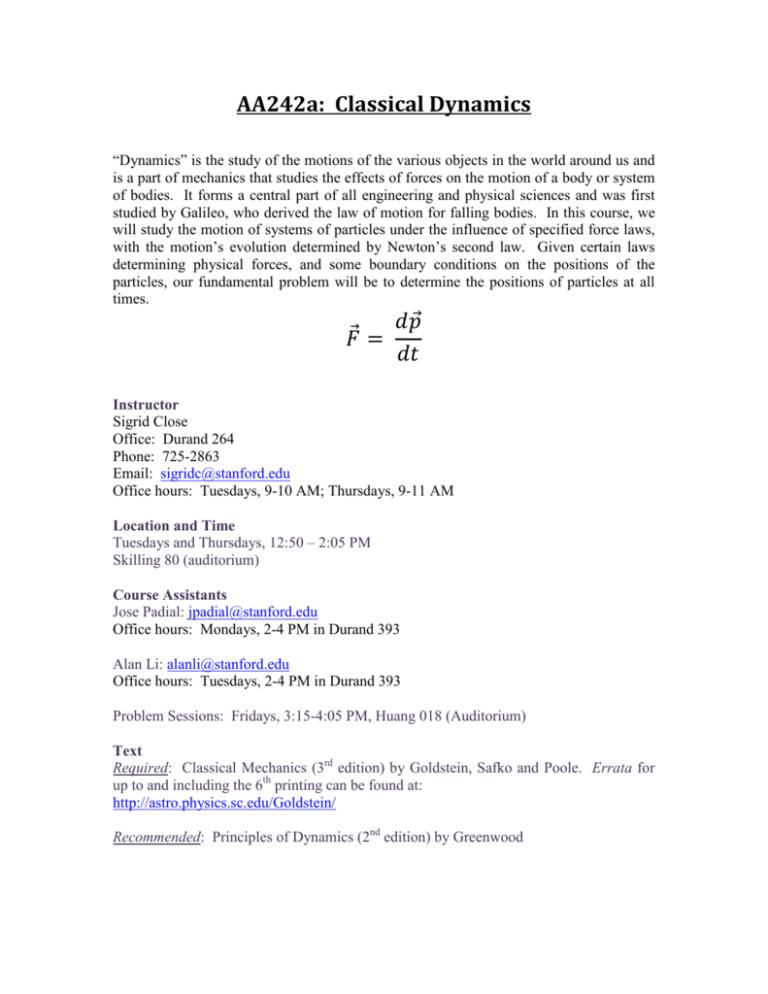
AA242a: Classical Dynamics “Dynamics” is the study of the motions of the various objects in the world around us and is a part of mechanics that studies the effects of forces on the motion of a body or system of bodies. It forms a central part of all engineering and physical sciences and was first studied by Galileo, who derived the law of motion for falling bodies. In this course, we will study the motion of systems of particles under the influence of specified force laws, with the motion’s evolution determined by Newton’s second law. Given certain laws determining physical forces, and some boundary conditions on the positions of the particles, our fundamental problem will be to determine the positions of particles at all times. ܨԦ = ݀Ԧ ݀ݐ Instructor Sigrid Close Office: Durand 264 Phone: 725-2863 Email: sigridc@stanford.edu Office hours: Tuesdays, 9-10 AM; Thursdays, 9-11 AM Location and Time Tuesdays and Thursdays, 12:50 – 2:05 PM Skilling 80 (auditorium) Course Assistants Jose Padial: jpadial@stanford.edu Office hours: Mondays, 2-4 PM in Durand 393 Alan Li: alanli@stanford.edu Office hours: Tuesdays, 2-4 PM in Durand 393 Problem Sessions: Fridays, 3:15-4:05 PM, Huang 018 (Auditorium) Text Required: Classical Mechanics (3rd edition) by Goldstein, Safko and Poole. Errata for up to and including the 6th printing can be found at: http://astro.physics.sc.edu/Goldstein/ Recommended: Principles of Dynamics (2nd edition) by Greenwood MATLAB Resources MATLAB Primer by K. Sigmon: http://math.ucsd.edu/~driver/21d-s99/matlab-primer.html MATLAB Documentation: http://www.mathworks.com/access/helpdesk/help/techdoc/matlab.shtml Requirements and Grading Problem Sets (9 total): 30% of grade • Weekly problem set assignments • Solutions will be posted at the time of an assignment’s due date in order to provide immediate feedback. Hence, no extensions or late homework will be accepted • Students may work in groups but should write up solutions individually • To receive full credit on a problem, a problem set must include a reasonably clear explanation of the method used to obtain a solution. Midterm test in class: 30% of grade Final exam: 40% of grade Important Dates Midterm test in class: November 2 Final Exam: December 10 Website Coursework Proposed Lecture List I. Elementary Particles (Goldstein et al., Chapter 1) a. System of particles b. Holonomic and nonholonomic constraints c. D’Alembert’s principle and Lagrange’s equations II. Variational Principles and Lagrange’s Equations (Goldstein et al., Chapter 2) a. Hamilton’s principle b. Conservation theorems and symmetry properties III. Kinematics of Rigid Body Motion (Goldstein et al., Chapter 4) a. Orthogonal transformations b. Eigenvalues and eigenvectors c. Euler angles d. Finite rotations e. Coriolis force IV. Dynamics of Rigid Body Motion (Goldstein et al., Chapter 5) a. Tensors b. Inertia Tensor and Moment of Inertia c. Euler Equations d. Gyroscopes e. Tops
